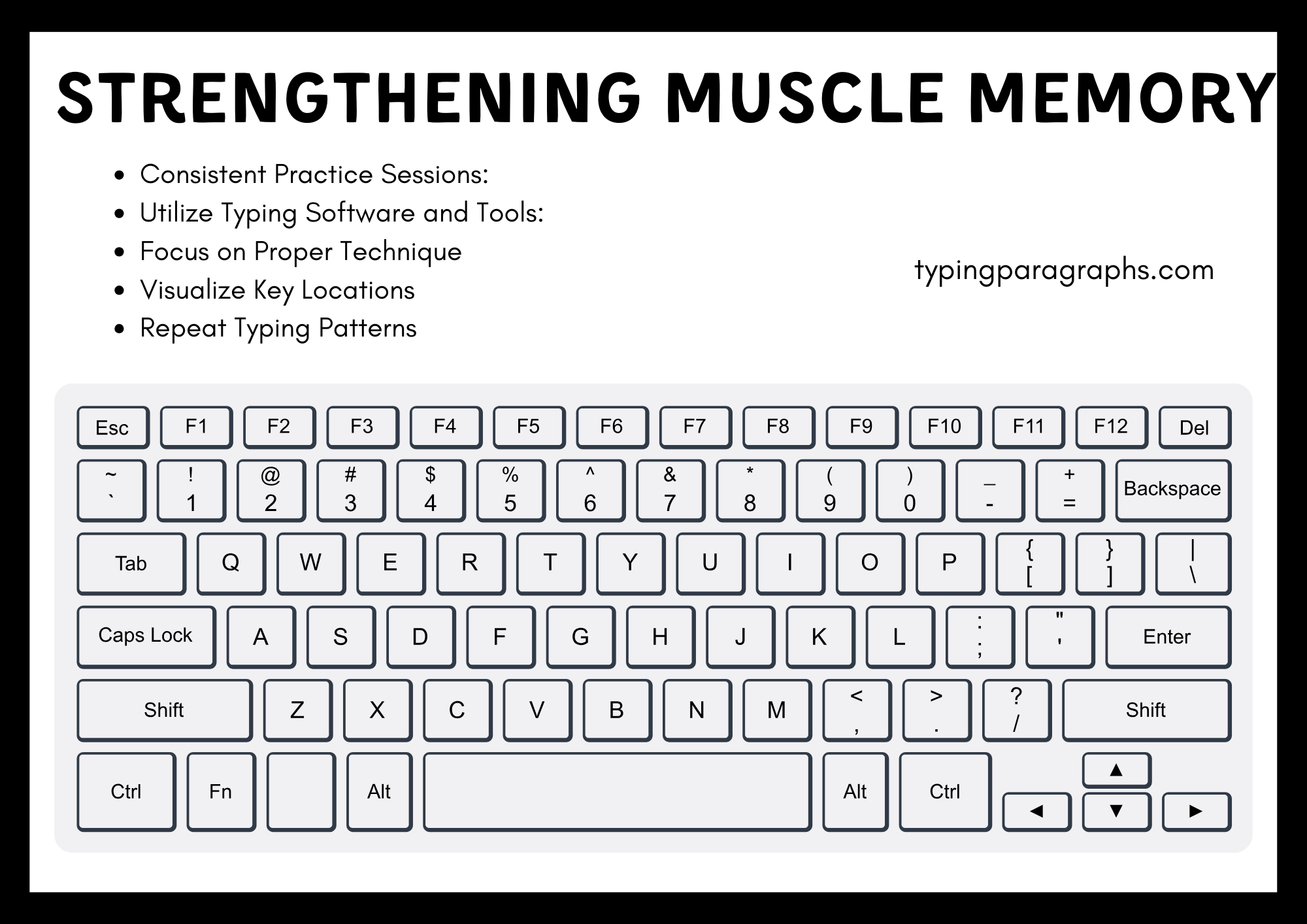Building Typing Efficiency: Strengthening Muscle Memory for Proficient Typing

In today’s fast-paced digital world, mastering typing skills is crucial for boosting productivity and efficiency in various spheres of life, from academic endeavors to professional tasks. One key aspect of becoming proficient in typing is developing muscle memory, which allows typists to input text quickly and accurately without the need to look at the keyboard constantly. Here’s a comprehensive guide on how to increase muscle memory for typing skills:
Understanding Muscle Memory in Typing
- Muscle memory is the ability of the muscles to perform tasks automatically through repeated practice.
- In typing, muscle memory enables typists to type effortlessly and accurately without consciously thinking about key locations.
Effective Strategies to Build Muscle Memory for Typing:
1. Consistent Practice Sessions:
-
- Dedicate regular practice sessions to typing exercises to reinforce muscle memory.
- Practice typing drills focusing on specific keys and finger movements to build muscle memory gradually.
2. Utilize Typing Software and Tools:
-
- Use typing software and online tools that offer structured lessons and interactive exercises.
- Programs like TypingClub and Keybr provide customizable training plans to help reinforce muscle memory effectively.
3. Focus on Proper Technique:
-
- Pay attention to proper hand positioning and finger placement on the keyboard.
- Practice touch typing techniques to enhance muscle memory by typing without looking at the keys.
4. Incremental Learning Approach:
-
- Start with simple exercises and gradually increase complexity to challenge and strengthen muscle memory.
- Introduce new keys and typing patterns systematically to reinforce muscle memory for different keystrokes.
5. Repeat Typing Patterns:
-
- Repeat common typing patterns, words, and phrases to reinforce muscle memory for frequently used combinations.
- Focus on accuracy and consistency to solidify muscle memory for specific typing sequences.
6. Take Breaks and Rest:
-
- Allow adequate rest periods during practice sessions to prevent mental fatigue and maintain focus.
- Taking short breaks helps consolidate muscle memory and improves overall typing performance.
7. Visualize Key Locations:
-
- Visualize the layout of the keyboard and the position of keys in your mind while typing.
- Mental imagery can reinforce muscle memory and improve typing accuracy over time.
8. Regular Evaluation and Feedback:
-
- Assess your typing speed and accuracy regularly using online typing tests.
- Analyze areas of improvement and adjust practice sessions accordingly to strengthen muscle memory for specific keystrokes.
Conclusion
Building muscle memory for typing skills is essential for achieving speed, accuracy, and efficiency in typing tasks. By implementing consistent practice sessions, utilizing typing software, focusing on proper technique, and repeating typing patterns, typists can enhance their muscle memory and improve overall typing proficiency. Incorporate these strategies into your typing practice regimen to unlock your full potential and become a proficient typist in the digital age.
Mastering Typing Skills: A Comprehensive Guide to Learning Typing Efficiently
How to Type Faster: A Comprehensive Guide to Improving Your Typing Speed


2 Comments